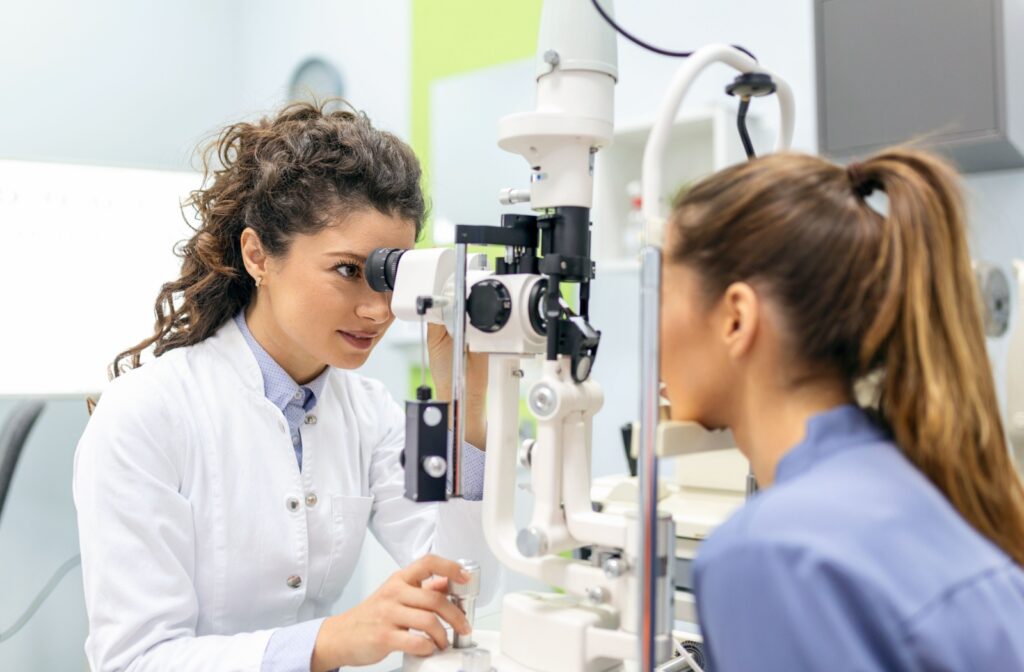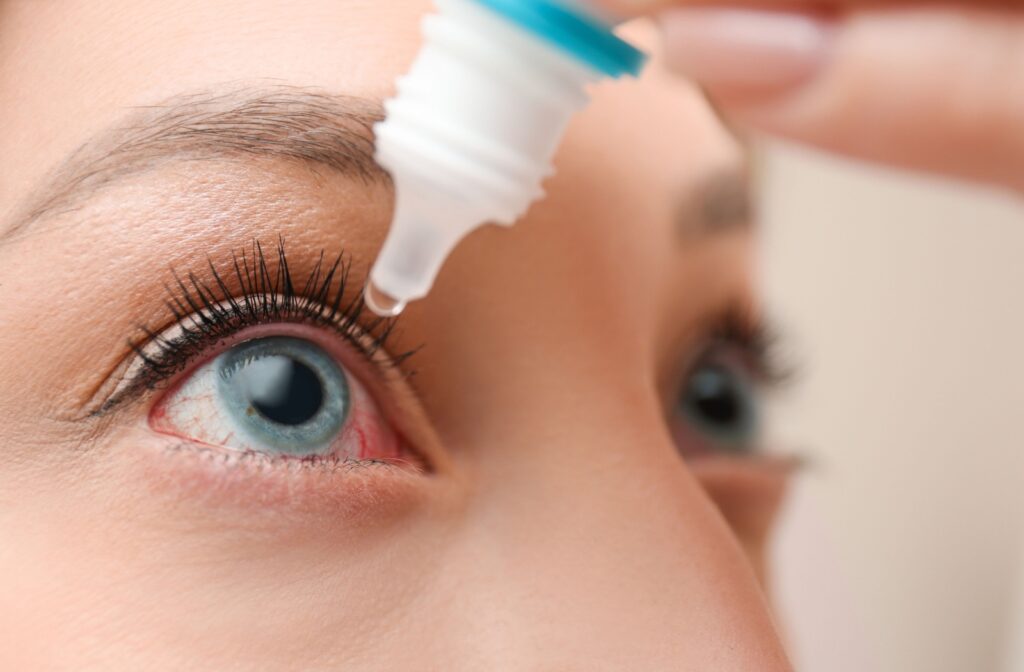When your eyes are red, inflamed, and itchy, it can be frustrating. Pink eye, or conjunctivitis, is a common problem that often causes significant discomfort and visible redness throughout your eyes. But pink eye isn’t the only condition that can cause these symptoms; plenty of other potential eye conditions can cause this discomfort.
Some conditions that are commonly misdiagnosed as pink eye include:
- Allergies
- Dry eye
- Styes
- Keratitis
- Uveitis
What Is Pink Eye?
The whites of your eyes and the inside of your eyelids are lined with a thin membrane called the conjunctiva. This is responsible for protecting your eyes, but it’s also highly sensitive.
When this membrane becomes inflamed, it causes a condition called pink eye. Medically known as conjunctivitis, this condition is well-known for how it causes:
- Redness
- Itchiness
- Tearing
- Discharge from the eyes
There are three main types of pink eye: viral, bacterial, and allergic. Each of these has its own unique causes and treatment, but they all cause the tell-tale redness and irritating sensations in the eye. However, remember: pink eye isn’t the only condition that can cause these problems.
Allergies
Allergic reactions are one of the most frequent causes of eye irritation. When your eyes come into contact with allergens like pollen, pet dander, or dust mites, they can become red and itchy—symptoms that can easily be mistaken for pink eye.
Common symptoms of eye allergies include:
- Watery discharge
- Swollen eyelids
- Dark circles under the eyes
Unlike pink eye, allergic reactions aren’t contagious. You can usually identify allergies by symptoms affecting other parts of your body—like constant sneezing or a scratchy throat. Fortunately, allergies can often be treated with over-the-counter medication and antihistamines.
Dry Eye
Whenever you blink, you’re dispersing a thin film of tears over your eye’s surface. This helps keep your eyes protected from the outside air and gives them a way to flush away harmful particles like bacteria or dust. However, this tear film requires a careful mix of water, mucus, and oils to function.
When there’s an imbalance in these components, it’s a condition called dry eye. This occurs when your eyes don’t produce enough tears or when the tears evaporate too quickly. As a result, your eyes quickly become inflamed; this often causes the tell-tale redness usually associated with pink eye.
You can often identify dry eye by the following:
- Persistent burning or scratchy sensations
- Stringy mucus in or around the eyes
- Sensitivity to light
- Redness
- Blurred vision that improves with blinking
This is often a chronic condition that requires constant management. However, your optometrist can help you find relief from your symptoms through dry eye treatment, a combination of strategies designed to restore the balance of tear film and reduce your symptoms.
Styes
A stye is a painful red bump that forms on or near the edge of the eyelid. While it’s localized and doesn’t affect the entire eye like pink eye, the redness and discomfort can sometimes lead to confusion about what condition you’re experiencing.
You can usually identify a stye by looking for a small red bump. This may appear as a pimple, and often leads to:
- Swelling of the eyelid
- Tearing
- Crusting along the eyelid
- Light sensitivity
Unlike pink eye, styes are often caused by an infection in an oil gland or hair follicle on the eyelid, rather than the lining of the eye itself. Styes can usually be treated through warm compresses and antibiotics if necessary. It’s important to note that you should never try to pop a stye; this can spread bacteria and cause other infections in the surrounding area.

Keratitis
Keratitis is an inflammation of the cornea, the clear, dome-shaped surface that covers the front of your eye. This can develop due to injury, infections, or underlying conditions. Keratitis is a serious problem that requires quick intervention; it’s one of the leading causes of blindness across the country.
Symptoms of keratitis include:
- Eye pain and redness
- Blurred or decreased vision
- Sensitivity to light
- Excessive tearing or discharge
- Difficulty opening your eye due to pain or irritation
Keratitis is much more serious than pink eye. If you suspect you have keratitis or notice any significant pain or discomfort, visit your optometrist as soon as you can.
Uveitis
Uveitis develops when the uvea—the middle layer of your eye—becomes inflamed. This is often due to an infection or injury, but can also be caused by some underlying autoimmune disorders. While this isn’t as common as pink eye or other eye conditions, uveitis can cause significant damage to your vision if you leave it untreated.
This condition can cause:
- Blurry vision
- An increase in eye floaters
- Pain and discomfort
Uveitis is a serious condition that requires immediate attention to prevent complications and damage to your vision. If you ever notice eye pain, treat it as an emergency and visit your optometrist as soon as you can.
What’s Causing Your Symptoms?
Dealing with sudden redness and discomfort isn’t a fun experience. If you’re noticing anything unusual, come see our team at Restore Vision Center; we can diagnose what’s causing your symptoms and provide you with a treatment plan to find relief. Book an appointment with our team today!




